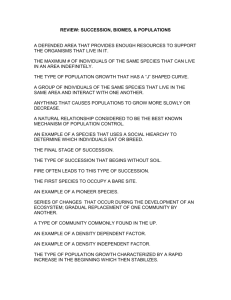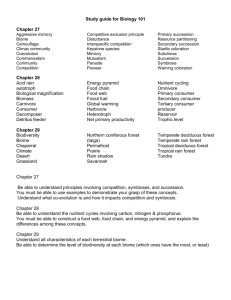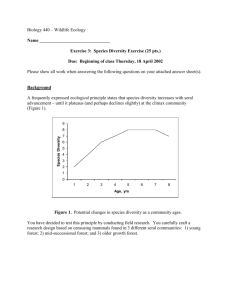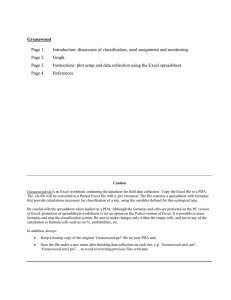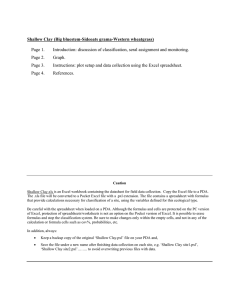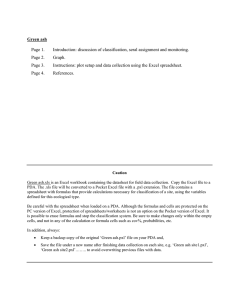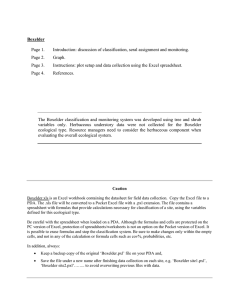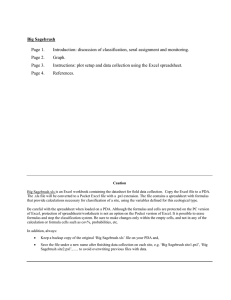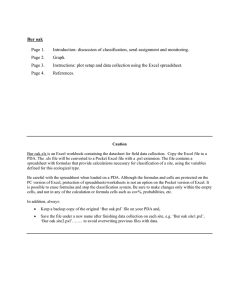Biomes
advertisement
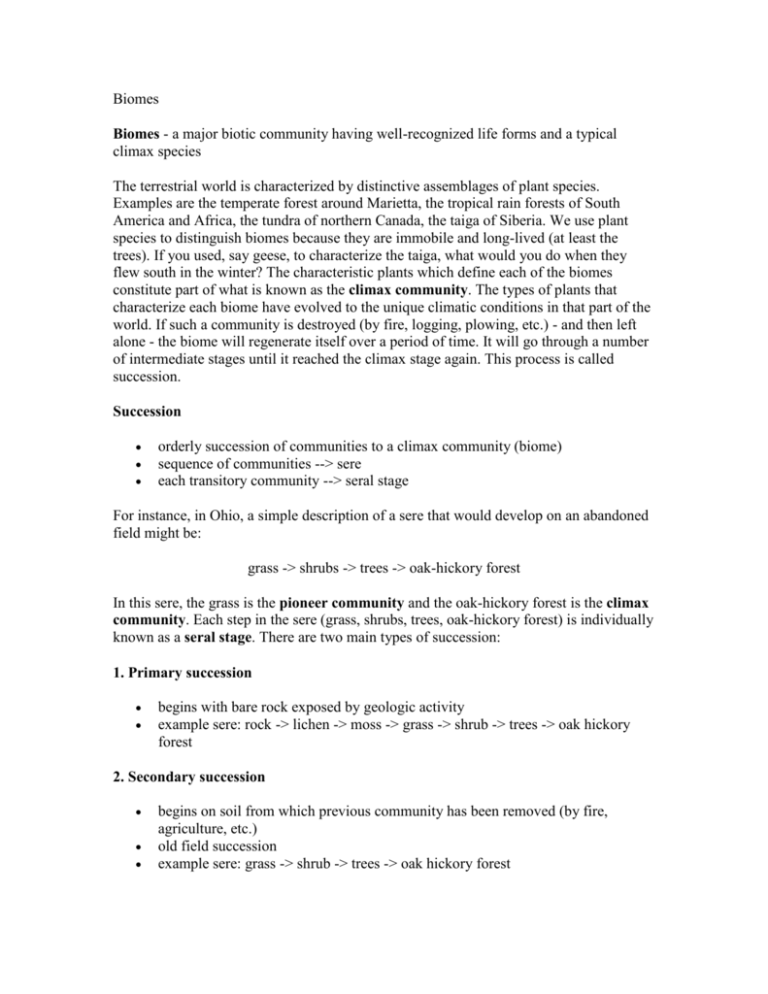
Biomes Biomes - a major biotic community having well-recognized life forms and a typical climax species The terrestrial world is characterized by distinctive assemblages of plant species. Examples are the temperate forest around Marietta, the tropical rain forests of South America and Africa, the tundra of northern Canada, the taiga of Siberia. We use plant species to distinguish biomes because they are immobile and long-lived (at least the trees). If you used, say geese, to characterize the taiga, what would you do when they flew south in the winter? The characteristic plants which define each of the biomes constitute part of what is known as the climax community. The types of plants that characterize each biome have evolved to the unique climatic conditions in that part of the world. If such a community is destroyed (by fire, logging, plowing, etc.) - and then left alone - the biome will regenerate itself over a period of time. It will go through a number of intermediate stages until it reached the climax stage again. This process is called succession. Succession orderly succession of communities to a climax community (biome) sequence of communities --> sere each transitory community --> seral stage For instance, in Ohio, a simple description of a sere that would develop on an abandoned field might be: grass -> shrubs -> trees -> oak-hickory forest In this sere, the grass is the pioneer community and the oak-hickory forest is the climax community. Each step in the sere (grass, shrubs, trees, oak-hickory forest) is individually known as a seral stage. There are two main types of succession: 1. Primary succession begins with bare rock exposed by geologic activity example sere: rock -> lichen -> moss -> grass -> shrub -> trees -> oak hickory forest 2. Secondary succession begins on soil from which previous community has been removed (by fire, agriculture, etc.) old field succession example sere: grass -> shrub -> trees -> oak hickory forest secondary succession can proceed much faster because the soil has been prepared by the previous community General trends in succession: Early seral stages are highly productive but require large inputs of nutrients and also tend to lose nutrients. Biomass increases, but there is low productivity and fluctuations in biomass are common. These seral stages are dominated by "weedy" or "r-adapted" species which reproduce quickly, but often die young. Most of their energy goes into reproduction. There are relatively few species in early seral stages. Climax seral stages are much more complex, with many species. They create a favorable environment for many species. Biomass does not fluctuate, and decomposition rates are roughly equivalent to new production. Nutrients are cycled efficiently, and rarely leave the ecosystem. Individual organisms are longer-lived, since they invest more resources in themselves and less in producing offspring. Locally, a recently cleared field is an example of an early seral stage. It is colonized by grasses and other plants that produce many seeds, such as many annuals. These plants may live only one year, set seed, then die. The organisms in the field will not be able to cycle all of the nutrients, and many nutrients will run off with rainfall. On the other hand, the climax forest is characterized by trees, which are long-lived. There are many species, and each provides living space and food resources for other plants and a host of animals. Decomposing materials are recycled; few escape though the waters of the forest streams. If one farms in a rain forest, the community is moved from a climax community to an artificial community which resembles an early seral stage. The farm field will lose a lot of nutrients, something that tropical soils do not have in abundance. The land will be useless for farming in a few years. This table summarizes the differences between pioneer and climax communities: Pioneer Community Climax Community Harsh environment favorable environment biomass increasing biomass stable energy consumption inefficient energy consumption efficient some nutrient loss nutrient cycling low species diversity high species diversity fluctuations common fluctuations less common r - adapted K - adapted





